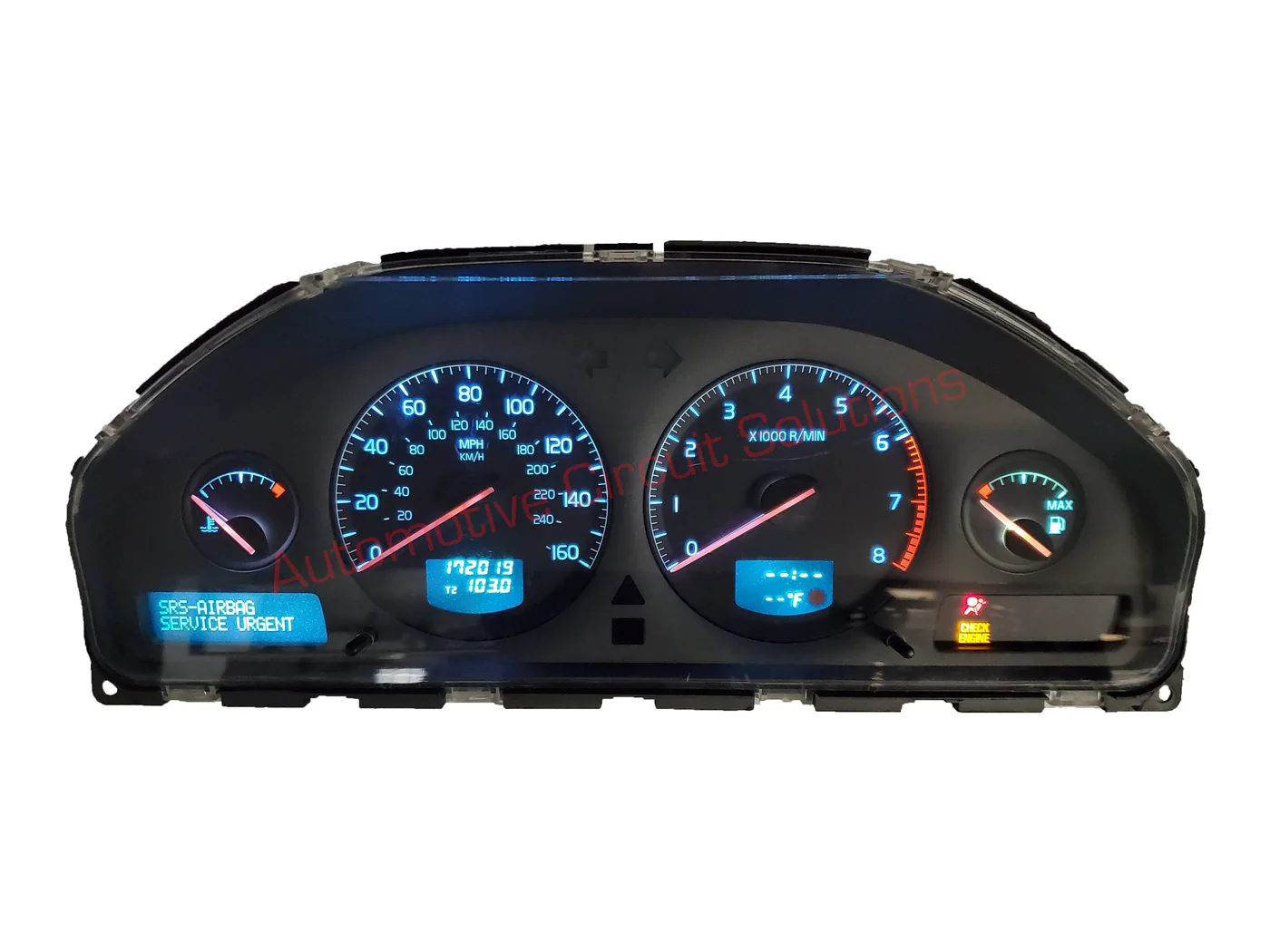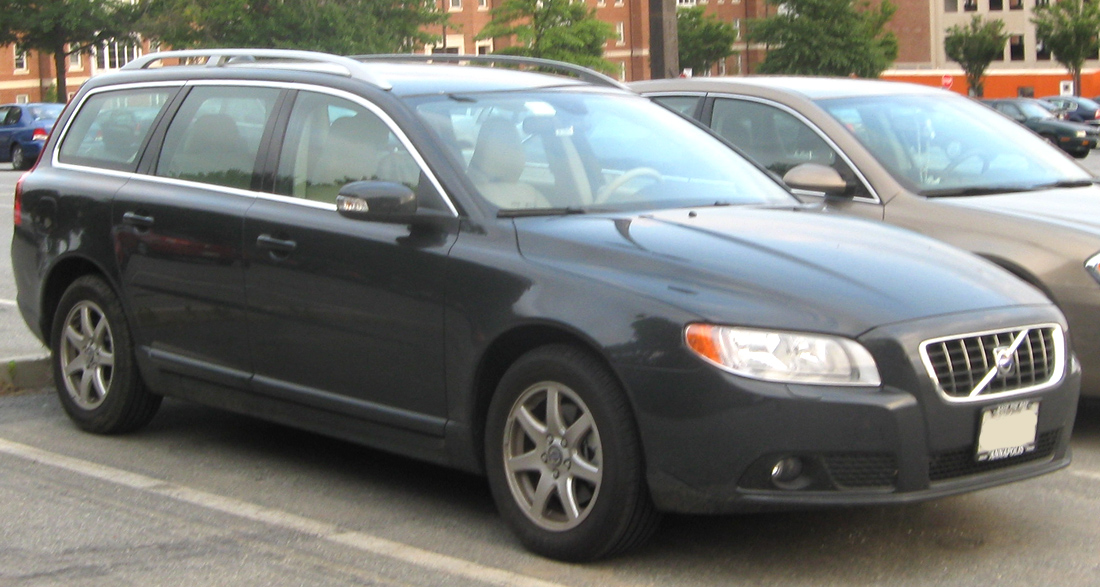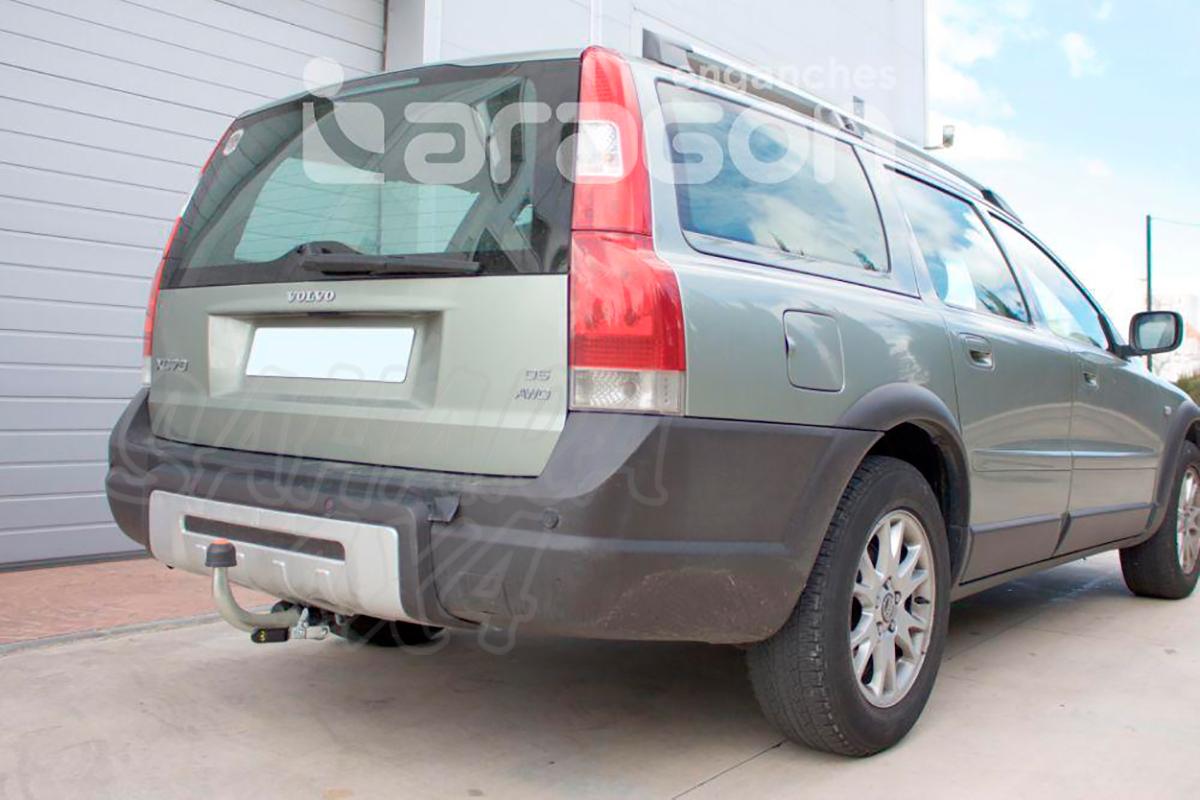For owners of the 2008 Volvo S60, a dashboard gauge cluster that fails to work can be both inconvenient and alarming. The gauge cluster, which includes vital instruments like the speedometer, tachometer, fuel gauge, and warning lights, is crucial for safe driving. When this cluster fails, it’s essential to troubleshoot and find solutions quickly. Here’s a guide to help you understand potential causes and solutions for a non-functional gauge cluster in a 2008 Volvo S60.
1. Common Causes of Gauge Cluster Failure
a. Blown Fuses
One of the most common reasons for gauge cluster failure in the 2008 Volvo S60 is a blown fuse. Each fuse is designed to protect electrical components by “blowing” if there is a surge or short in the system. If the gauge cluster fuse has blown, the gauges and indicators won’t function.
- Solution: Locate the fuse box under the dashboard or in the engine compartment. Refer to the owner’s manual to identify the fuse related to the gauge cluster. Check if it’s blown and replace it if necessary. Ensure that the replacement fuse matches the required amperage.
b. Wiring Issues
Wiring issues can disrupt the power flow to the gauge cluster. Corrosion, loose connections, or damaged wires can cause the dashboard to malfunction. Wiring harnesses in the dashboard area, especially near the gauge cluster, can become loose over time or be affected by moisture.
- Solution: Inspect the wiring connected to the gauge cluster and look for signs of wear, corrosion, or loose connections. Carefully reconnect any loose wiring. If there’s visible corrosion, clean the affected area or replace the damaged wires.
c. Faulty Instrument Cluster
A faulty instrument cluster itself may be to blame. Over time, electronic components within the cluster can wear out, leading to various display and functionality issues.
- Solution: Test the instrument cluster by removing it and connecting it to a diagnostic tool if available. If the cluster is determined to be defective, it might need to be repaired or replaced. You can also consult a professional to confirm the diagnosis.
d. Battery and Charging System Issues
Sometimes, a weak battery or charging system can cause the gauge cluster to malfunction. A low or fluctuating voltage supply might prevent the gauges from displaying properly.
- Solution: Check the battery voltage and ensure that it’s fully charged. You can also check the alternator to confirm that it’s charging the battery correctly. Replacing a weak battery or faulty alternator can often solve gauge cluster issues.
2. Diagnosing the Problem
a. Onboard Diagnostics (OBD-II) Scan
Performing an OBD-II scan can reveal error codes that may indicate the cause of the problem. The 2008 Volvo S60 is equipped with an OBD-II port, usually located near the steering column. An OBD-II scanner will read error codes related to the electronic control units (ECUs) and can help pinpoint issues.
b. Visual Inspection
Performing a thorough visual inspection of fuses, wiring, and connectors can help identify any obvious issues. Look for blown fuses, corroded wiring, or loose connectors near the gauge cluster.
c. Professional Inspection
If DIY troubleshooting doesn’t yield results, a professional inspection may be necessary. A certified Volvo technician can provide an in-depth diagnostic assessment, especially for complex electrical issues.
3. DIY Repairs vs. Professional Help
While some repairs, like replacing a fuse or battery, are DIY-friendly, other issues, such as rewiring or replacing the gauge cluster, may require professional expertise. Attempting to disassemble and repair the instrument cluster without experience can lead to further damage, so it’s wise to consult a professional if you’re unsure about handling it yourself.
4. Preventive Maintenance
To minimize the risk of future gauge cluster issues, follow these preventive tips:
- Regularly check fuses: Inspect your fuse box periodically to ensure no fuses are nearing the end of their lifespan.
- Keep the battery in good condition: Check battery voltage regularly and replace it when it starts showing signs of weakness.
- Avoid moisture exposure: Avoid letting moisture or liquid near the dashboard area to prevent corrosion in wiring and connectors.
- Run periodic diagnostics: Using an OBD-II scanner once in a while can help identify potential issues before they escalate.
Final Thoughts
When the dashboard gauge cluster on your 2008 Volvo S60 isn’t working, it’s essential to identify the issue promptly. A non-functioning cluster affects your ability to monitor vital driving metrics, compromising safety. While DIY troubleshooting can resolve minor issues, it’s wise to seek professional help for complex electrical repairs. By addressing the root cause and maintaining the vehicle’s electrical components, you can enjoy a fully functional and reliable gauge cluster in your Volvo S60.
FAQs
1. Why is my 2008 Volvo S60 gauge cluster not working at all?
- This could be due to a blown fuse, wiring issues, a faulty gauge cluster, or battery and charging system problems. Checking these components can help you identify the cause.
2. Where is the fuse for the gauge cluster located?
- The fuse box in the 2008 Volvo S60 is typically under the dashboard or in the engine compartment. Refer to your owner’s manual for the exact location of the gauge cluster fuse.
3. How can I tell if the gauge cluster fuse is blown?
- A blown fuse often has a broken metal filament inside or visible scorch marks. Use a multimeter to test the fuse, or replace it with one of the same amperage if it appears damaged.
4. What if replacing the fuse doesn’t fix the problem?
- If the gauge cluster still isn’t working after replacing the fuse, check for other issues, such as damaged wiring, a weak battery, or a faulty instrument cluster.
5. Can a low battery cause the gauge cluster to stop working?
- Yes, if the battery voltage is low, it can affect the gauge cluster’s operation. Ensure the battery is fully charged and check the alternator to confirm it’s working properly.
6. How do I know if the instrument cluster itself is faulty?
- If you’ve ruled out other issues (fuse, wiring, battery), the instrument cluster may be faulty. A diagnostic scan using an OBD-II scanner or a professional inspection can confirm this.
7. Can I fix the gauge cluster myself?
- Some fixes, like replacing fuses or checking the battery, can be done at home. However, if the issue involves wiring or internal cluster components, it’s best to consult a professional to avoid further damage.
8. Is it safe to drive with a non-functional gauge cluster?
- Driving with a non-functional gauge cluster is not recommended. It prevents you from monitoring your speed, fuel levels, and engine health, which can compromise safety.
9. How much does it cost to repair or replace a gauge cluster?
- Repair costs vary but can range from $100 to $500, depending on the severity of the issue. Replacement costs can be higher, especially if done by a dealership.
10. Will a software update help with gauge cluster issues?
- While uncommon, software issues can occasionally impact electronic components. A Volvo dealership or authorized repair shop can confirm if a software update is needed.
11. Can an OBD-II scanner detect gauge cluster issues?
- Yes, an OBD-II scanner can sometimes detect error codes related to the gauge cluster or other electrical problems, which can aid in diagnosing the issue.
12. How do I prevent future gauge cluster problems?
- Regularly check fuses, keep the battery in good condition, avoid moisture exposure near the dashboard, and run periodic OBD-II diagnostics to catch issues early.
13. What other dashboard issues could I experience with my Volvo S60?
- Other common dashboard issues include flickering lights, unresponsive buttons, and warning lights that stay on or off due to faulty sensors or wiring issues.
14. Where can I get professional help for a Volvo gauge cluster issue?
- Volvo dealerships, certified repair shops, or auto electricians familiar with European vehicles are best equipped to handle gauge cluster issues in a Volvo.











